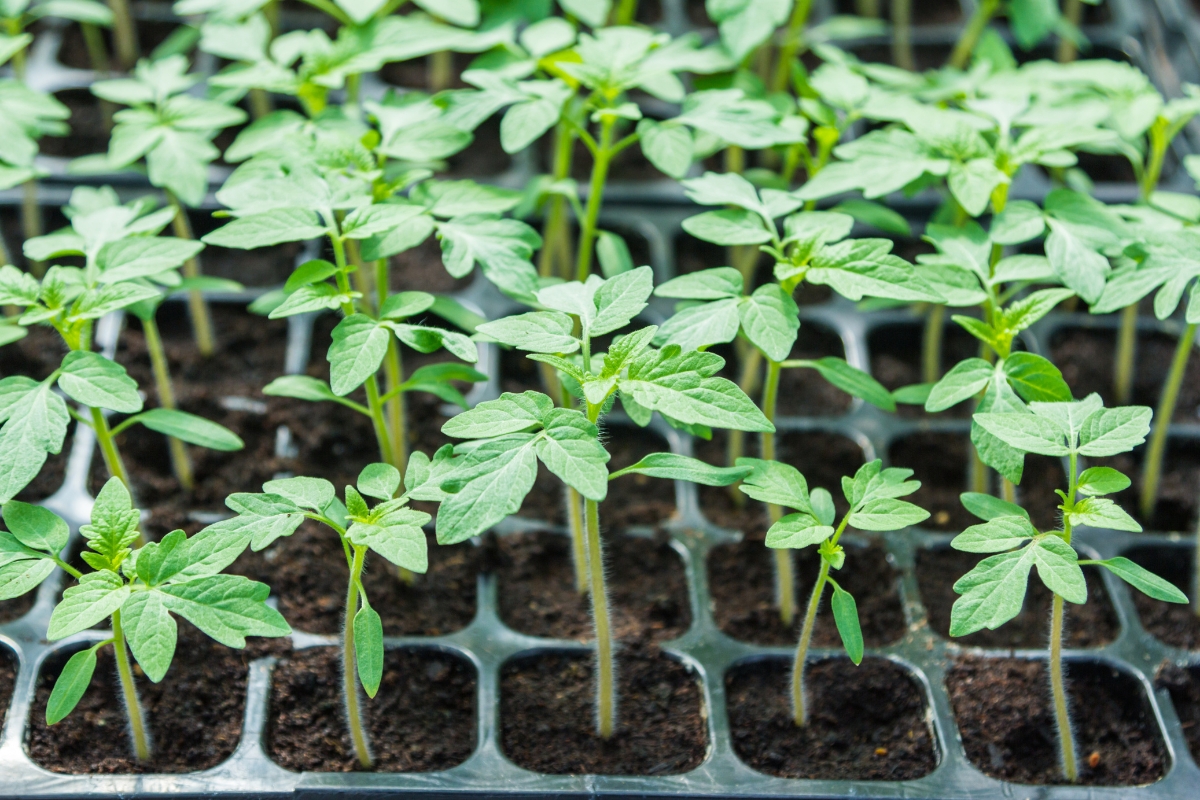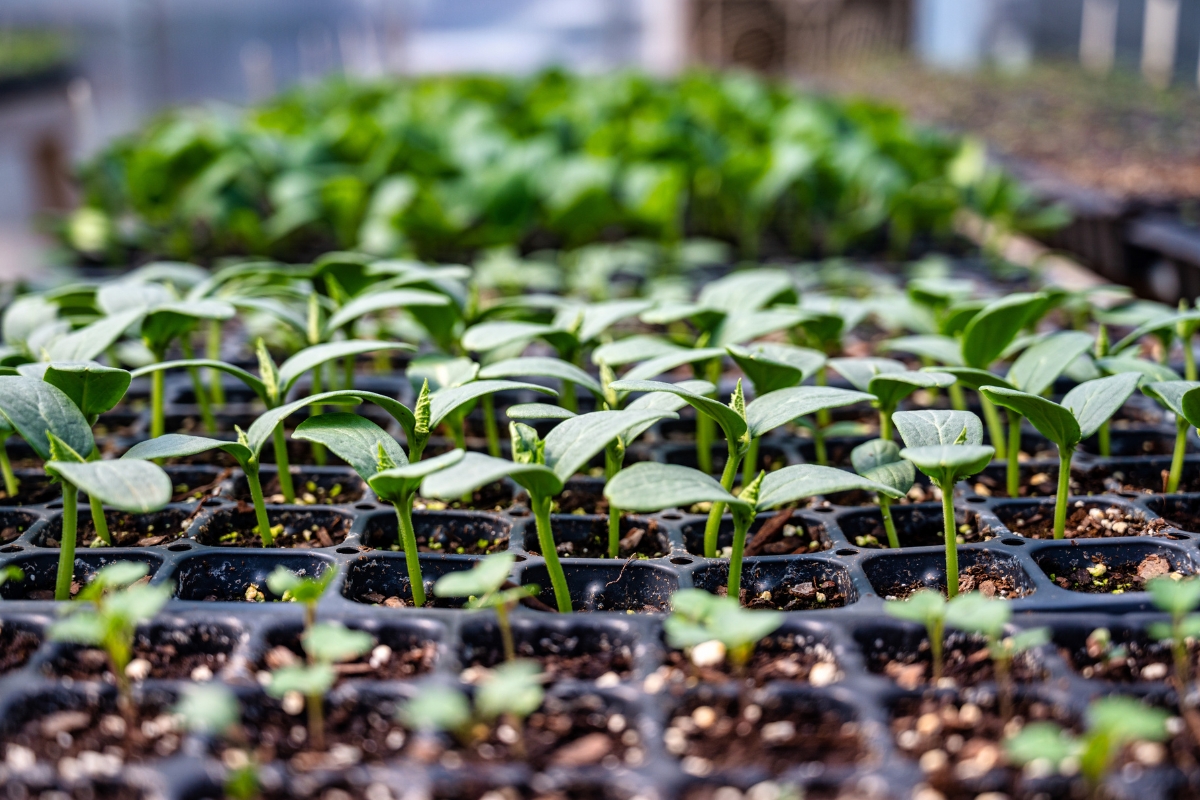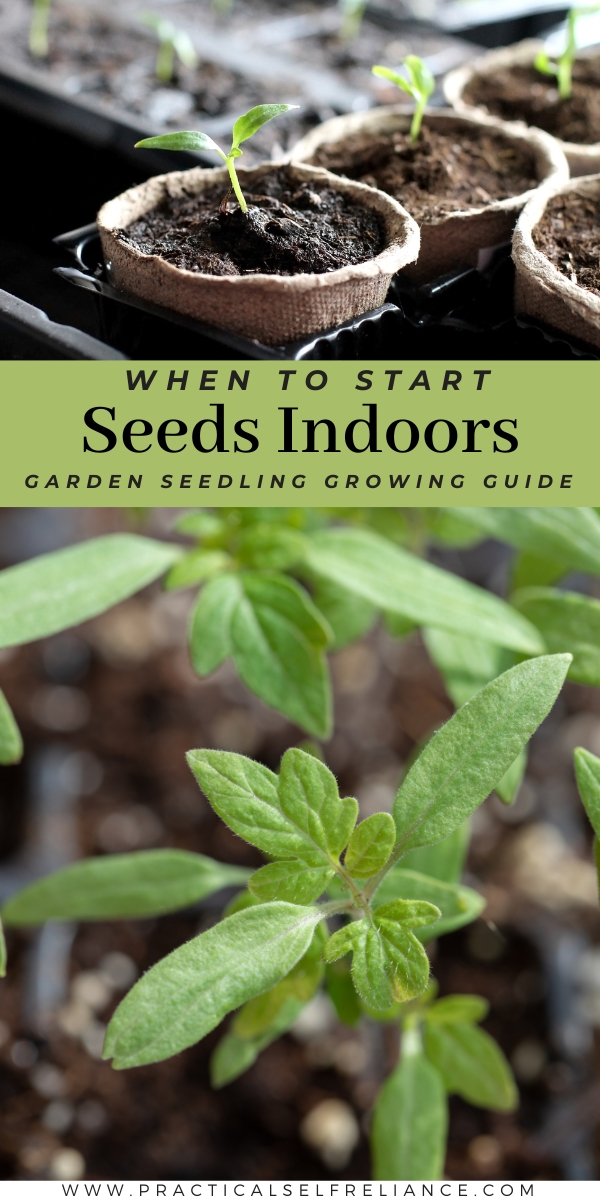Affiliate disclosure: This post may contain affiliate links. Please see our Privacy Policy.
Knowing when to start seeds indoors can be a challenge, and even the most experienced gardeners are often hit with “spring fever,” and they’ll end up starting their seeds too early. Then again, some gardeners are always behind, and forget to start their seeds on time too… timing is everything, and knowing when to start seeds indoors can mean the difference between success and failure.

The most exciting thing about starting seeds indoors is that it allows you to jumpstart your gardening season by working up to 12 weeks before anything can actually be planted in the garden. But it also saves money since seeds are much more affordable than plants.
Starting seeds indoors can also give you access to plants you might not find already started in a nursery or local gardening center. It’s easier to start rare seeds and those that aren’t highly sought-after indoors instead of trying to find a store that sells garden-ready plants.
Indoor seed-starting also leads to an earlier harvest because your plants will already be established when you put them in the garden. Using the proper germination techniques, seed-starting mix, and fertilizer, your plants will be robust, hearty, and ready for a fantastic season.
What Seeds Need to Be Started Indoors?
Some seeds are commonly started indoors because it’s easier and because they transplant into the garden so well. These can include:
- Broccoli
- Brussel Sprouts
- Cabbage
- Cauliflower
- Eggplant
- Kale
- Lettuce
- Onion
- Okra
- Peppers
- Sweet potatoes (started from slips)
- Tomatoes
Others that are still commonly started indoors, but need to be transplanted carefully, include:
- Chard
- Cucumber
- Peas
- Pumpkins
- Spinach
- Squash

Seeds Not to Start Indoors
Some seeds need to be sown directly outdoors because their roots are too tender to survive transplanting. However, even when we do everything right, the shock to the root system is often too much for the plant, which is why it’s best to wait and sow them right into the garden according to the proper planting chart for your zone.
The best plants for direct sowing outdoors include:
- Arugula
- Beets
- Beans
- Carrots
- Daikon
- Kohlrabi
- Parsnips
- Radicchio
- Radishes
- Rutabaga
- Squash
- Turnips
- Watermelons (and other melon types)
How to Find the Last Frost Date
Indoor seed-starting is always linked to the last spring frost date for your particular zone. But how do you know what that date is? Is it the same every year? Does it go by state or county?
Finding your last spring frost date is linked to your zip code, and it’s easier to find than you might think. You can simply use this calculator from the farmer’s almanac, to find your last spring frost date by inputting your zip code.
Seed Starting Timeline
Once you find your last spring frost date, you can create a timeline for starting your seeds indoors by counting back from that date. For instance, if your last spring frost occurs on April 10th, counting back 12 weeks gives you a seed starting date of January 16. And you can apply this method to each timeline, as described on the seed packet or in the instructions that come with the seeds.
You can even start planning right after Christmas by checking the frost date calculator and starting a notebook for the seeds you intend to start. Make a note of the last frost date, and label pages for “12 weeks before last frost” and so on, to about “four weeks before last frost.” This way, you’ll have an at-a-glance list that makes seed-starting easier than it’s ever been.
Here are some short lists that can help you get started. Check out which veggies and flower annuals you can start at specific intervals before your last frost date.

12 Weeks Before Last Frost
These plants can be started up to three full months before the last spring frost, giving you an excellent start on your harvest once they’re planted outside. Be sure to consider each plant’s requirements for lighting, heat, nutrients, and airflow to ensure the best results at every stage.
You’ll transplant these plants to the garden about four to six weeks before the last frost (except the celery, which bolts in cold weather. Save it and transplant it two weeks before the last frost).
- Broccoli
- Brussel Sprouts
- Cabbage
- Cauliflower
- Celeriac
- Celery
- Collards
- Mustard
- Parsley Root
- Roselles
- Stevia
10 Weeks Before Last frost
Two and a half months before your last spring frost date, these plants can go into see trays to begin their journey toward the garden. These plants can be slow growing, but if all their needs are met, the robust plants will give you a rich harvest when they’re ready.
At this point, it still feels like “planting time” is a long way off, but if you aren’t careful, the time will get away from you quickly. So always keep an eye on your calendar and be sure your “must-haves” are ready to go in their seed-starting trays.
- Artichoke
- Cauliflower
- Chives
- Eggplant
- Jicama
- Lavender
- Leeks
- Lemongrass
- Onions
8 Weeks Before Last Frost
Two months before your last spring frost day, you can plant a wealth of seeds, including many for your herb garden. Each of these plants requires specific care, so be sure to do your research as you put them into their cells.
There are more seeds to start at this point, so you’ll be filling up empty space quickly and focusing on their care. Remember to go back and check the seeds you’ve already started for mildew, germinating and growing problems, and humidity retention. Keeping an eye on your seedlings can bring remarkable success as you move forward.
- Amaranth
- Anise
- Broccoli
- Cabbage
- Catnip
- Chili Peppers
- Chives
- Hyssop
- Kohlrabi
- Oregano
- Paprika Pepper
- Parsley
- Sage
- Savory
- Sweet Peppers
- St. John’s Wort
- Thyme
- Tomatillos
- Tomatoes
- Winged Bean
- Yarrow
6 Weeks Before Last Frost
You can plant these seeds indoors six weeks before the last frost, with excellent results. Each one, as before, requires specific care to achieve the best results. Consider these seed starters for your garden.
There are fewer seeds to start at the six-week point, but they’re just as important, especially for many staples like onions and peanuts. Remember to go back and check all your other seedlings, ensuring they’re getting enough light, moisture, and warmth.
- Asparagus
- Basil
- Calendula
- Chickpeas
- Cilantro
- Echinacea
- Fava Beans
- Fennel
- Marigolds
- Melons
- Morning Glory
- Okra
- Onion
- Peanut
- Rhubarb
- Shallots
- Spring Onion
4 Weeks Before Last Frost
These will be the last seeds you start before transplanting them into the garden. As planting time draws closer, you’ll continue to care for the plants you started eight weeks ago. In the intense last few weeks, your seed starting space may be getting limited. However, since you’ve likely already transplanted some of the seeds you started back at 12 weeks before the last frost date, you’ll see some space clearing up for more seed pots.
Though there are fewer plants to start by this time in the gardening season, it’s a great time to introduce airflow for all your plants that are still inside. An oscillating fan is a great choice to help stems become hardy and robust.
- Bitter melon
- Cucumber
- Melons
- Pumpkin
- Squash
Seed Growing Guides
If you’re looking for specific guides for growing various plants from seed, I’ve got you covered:
- Growing Lemon Trees from Seed
- Growing Apple Trees from Seed
- Growing Strawberries from Seed
- Growing Rhubarb from Seed
- Growing Asparagus from Seed
- Growing Tomatoes from Seed














